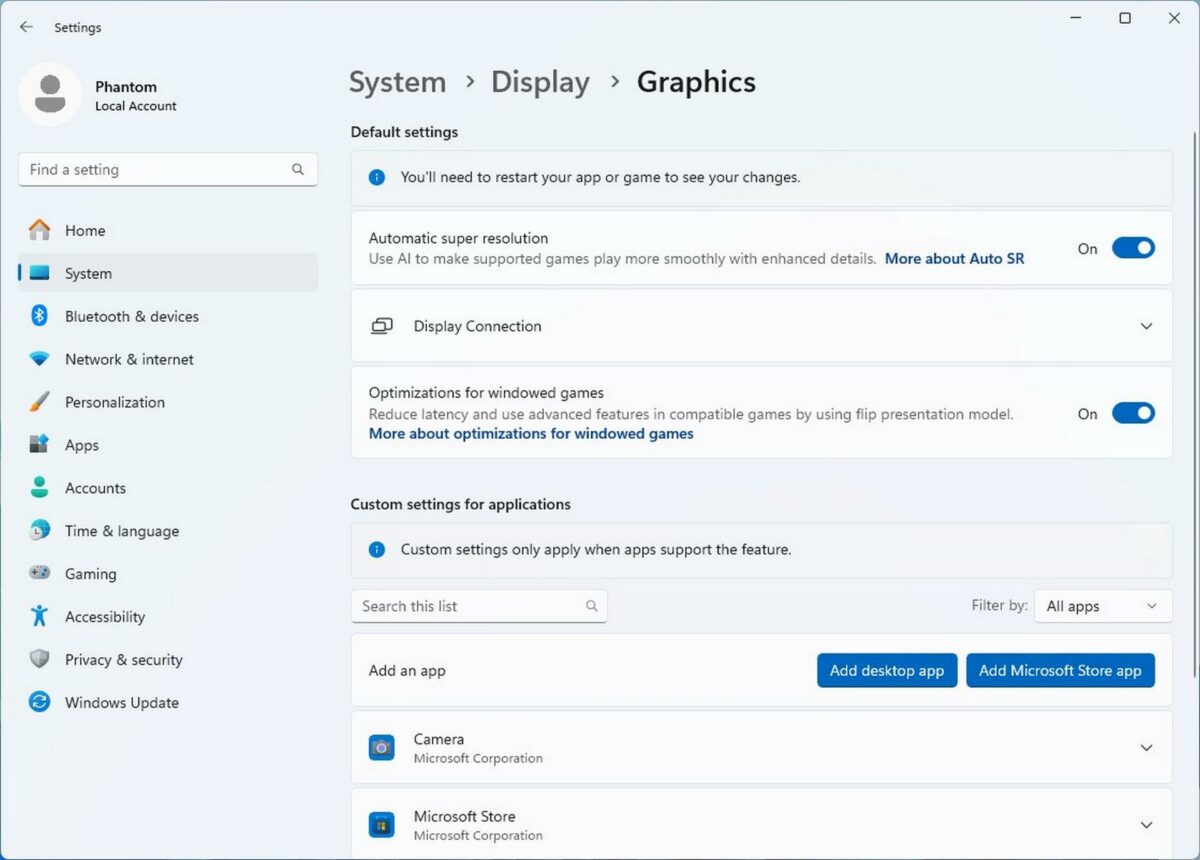Windows Insider testers have noticed a new system setting seemingly adding Super Resolution to apps and games. Hiding in the graphics settings, this option uses AI to enhance games, making them more detailed and smoother.
By now, nearly all gamers are probably familiar with the graphics upscaling solutions provided by all GPU manufacturers. However, Microsoft’s solution isn’t like the GPU-bound Nvidia DLSS, AMD FSR, and Intel XeSS. Instead, Windows leverages the NPU (Nural Processing Unit) capabilities inside the latest CPUs.
Dubbed Automatic Super Resolution, you can find this feature in Windows 11’s Insider Preview Build 26052. The idea is to lean on AI to upscale a low-resolution source into a higher resolution. It should, in theory, deliver higher frame rates and image quality while being easily accessible. Better yet, it might not require any developer integration. So far, we’re not sure how widely supported will be. It’s possible it might only work with UWP (Universal Windows Platform) games.

PhantomOfEarth on X has also noted that when launching a game, a Windows notification prompts you to enable the setting. While it’s nice to know about a handy feature like this, hopefully, it won’t be as annoying as Windows 10’s aggressive upgrade pop-ups.
The question is, would this approach add any unwanted latency since the upscaling doesn’t use the GPU? When using a dedicated graphics card, information first passes through the iGPU on the motherboard before being displayed. This has an additional cost on performance. Putting an extra run through the NPU may also add a bit of overhead. But as usual, we’d need a thorough review to answer this question when this feature hits the masses. Hopefully, we’ll learn more when the Windows 11 24H2 update lands later this year.

